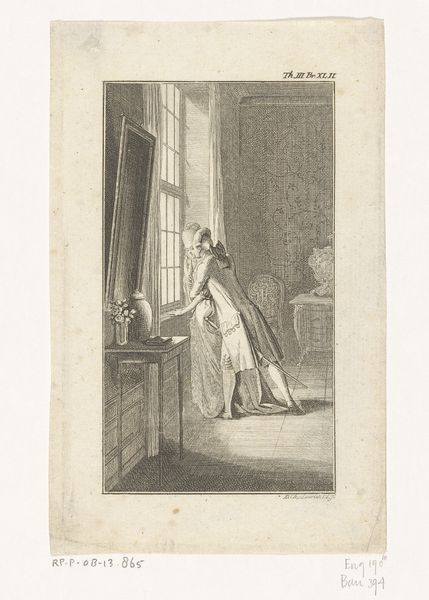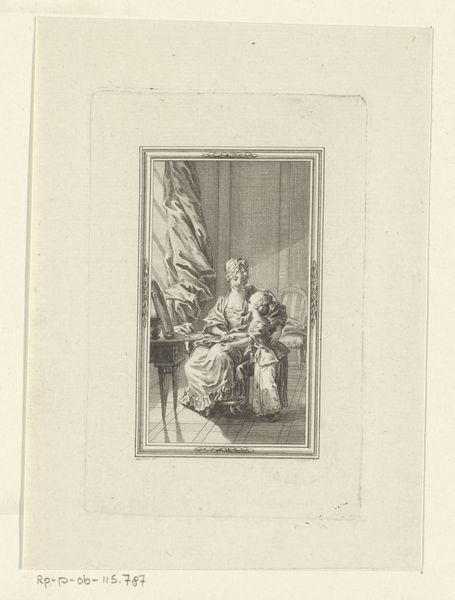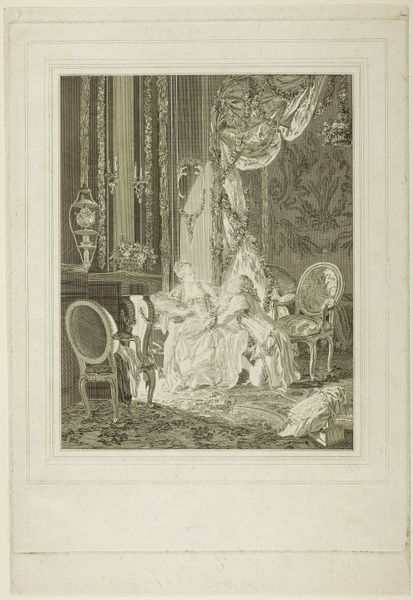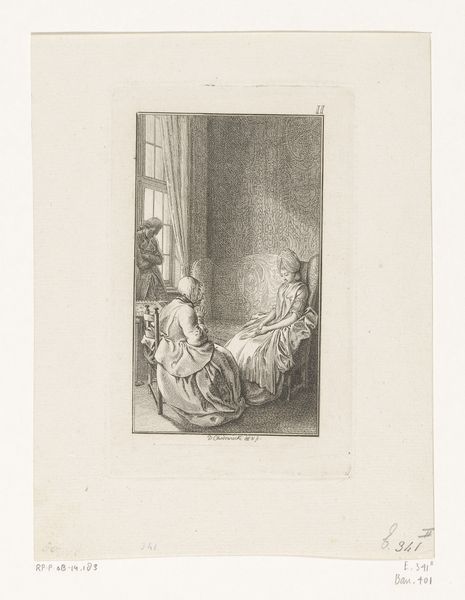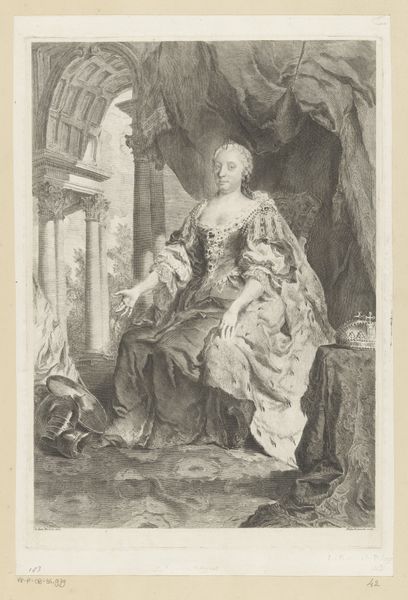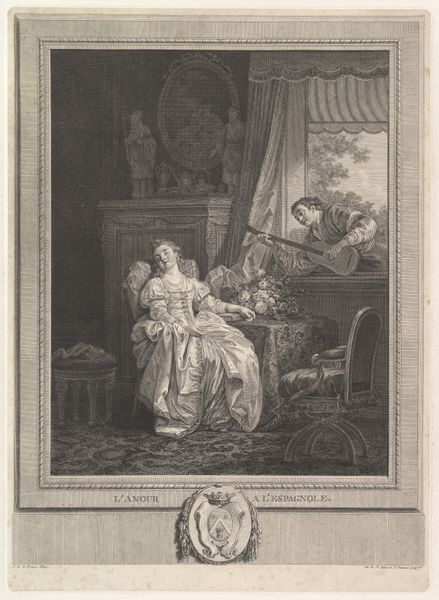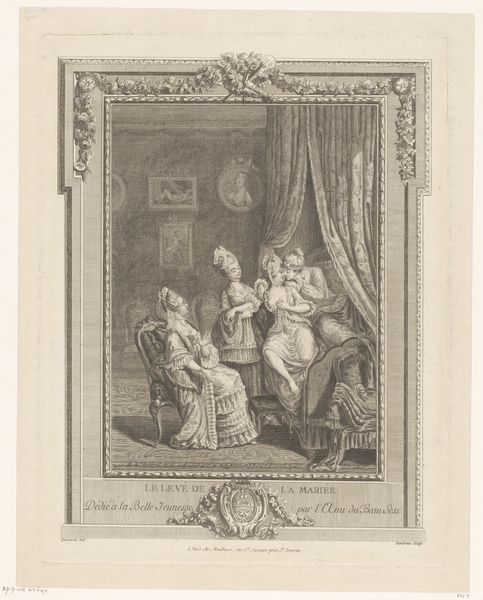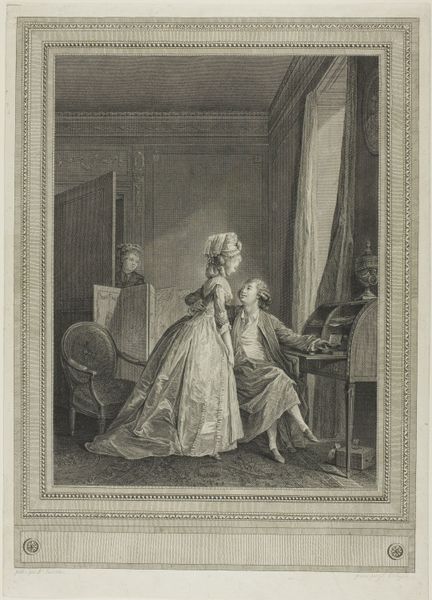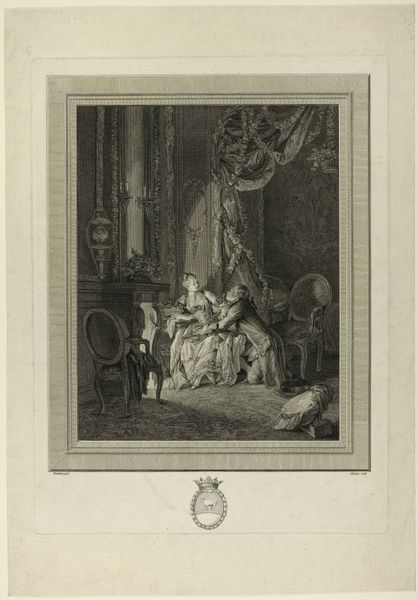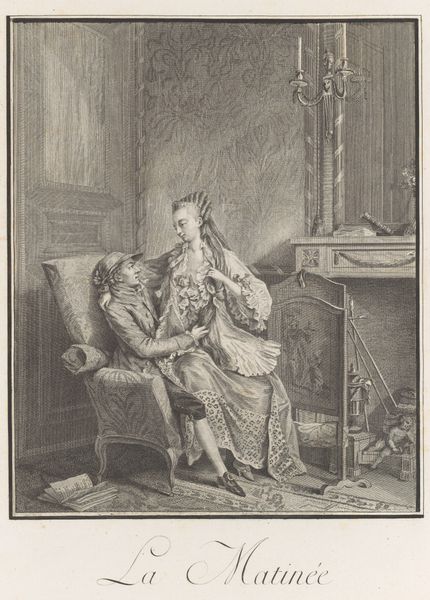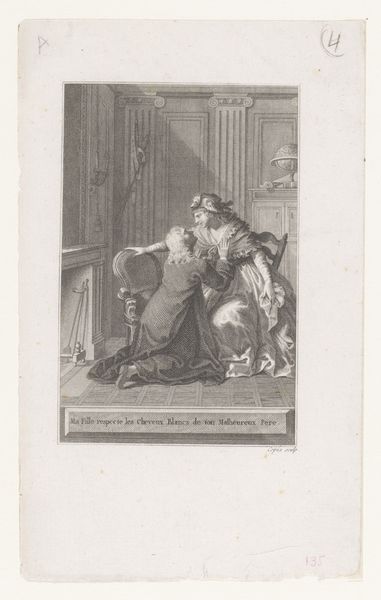
print, engraving
#
narrative-art
# print
#
old engraving style
#
figuration
#
pencil drawing
#
romanticism
#
genre-painting
#
history-painting
#
engraving
Dimensions: height 121 mm, width 70 mm
Copyright: Rijks Museum: Open Domain
Editor: This engraving, "Clarissa smekend op haar knieën voor Lovelace," from 1796 by Daniel Nikolaus Chodowiecki, presents a rather unsettling scene. The woman's posture seems to express utter desperation. How do you interpret this work? Curator: Indeed. Context is crucial here. This depicts a scene from Samuel Richardson's novel "Clarissa," a tragic story of seduction and manipulation. Chodowiecki, working within a burgeoning Romantic sensibility, highlights the power imbalances at play. Notice how Lovelace, though present, remains emotionally detached, standing while Clarissa is forced to kneel. What does that physical positioning suggest to you about their relative power in this relationship and in the broader social context? Editor: It screams vulnerability and coercion. She's literally at his feet, begging. So, this isn't just a sentimental scene, but a critique? Curator: Absolutely. Chodowiecki's print becomes a form of social commentary. By illustrating this scene, he implicates the viewer in witnessing, and thus judging, Lovelace's actions. We're asked to consider the structures that enable such exploitation, questioning the roles men and women were expected to play and challenging those norms. Consider also how the candle provides the only source of light; where are they positioned? Editor: Above the male figure? Casting him almost in shadows? This seems to imply culpability in a system that victimises women. Curator: Precisely. It uses intimacy to point at social issues. The print makes it accessible and promotes awareness on gendered roles within relationships during a changing era. Editor: So much more than just a pretty engraving; it’s a condemnation. Curator: It shows us how art is intrinsically bound up with larger sociopolitical debates.
Comments
No comments
Be the first to comment and join the conversation on the ultimate creative platform.
